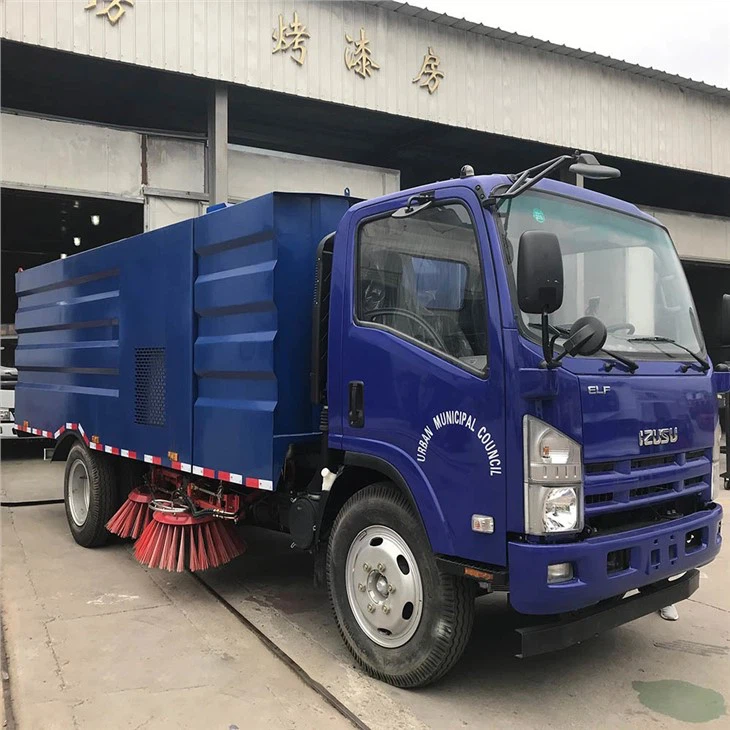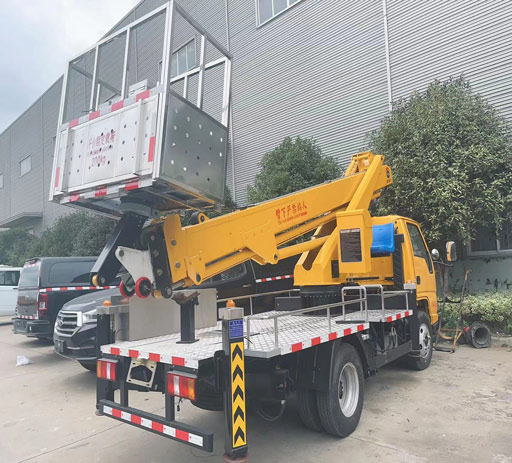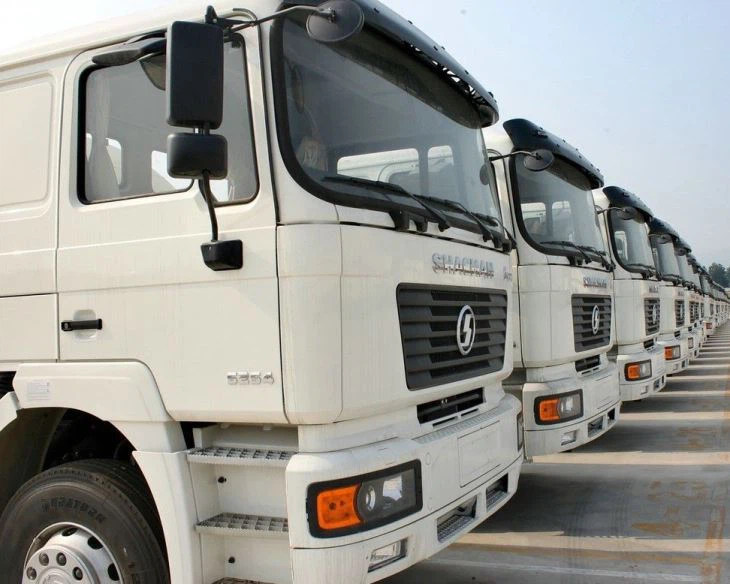Comprehensive Guide to Rear Loader Refuse Trucks

Introduction
Rear loader refuse trucks play a vital role in waste management, ensuring that communities remain clean and environmentally friendly. These specialized vehicles are designed for efficient waste collection and disposal, catering to households, businesses, and public facilities. In this comprehensive article, we will explore the mechanics, advantages, operational techniques, and trends surrounding rear loader refuse trucks. We will provide insights and practical tips for municipalities and waste management companies looking to invest in these essential vehicles.
What Are Rear Loader Refuse Trucks?
Rear loader refuse trucks have a unique design that facilitates the collection of waste from the rear. They utilize an automated system for loading refuse, allowing operators to collect trash quickly and efficiently. The truck is equipped with a hydraulic lift that raises the refuse containers to empty their contents into the truck’s compactor bin.
Historical Context
The concept of refuse trucks dates back to the early 20th century when cities began mechanizing waste collection to improve sanitation. Over the decades, rear loader refuse trucks evolved from simple designs to sophisticated machines that prioritize efficiency and safety.
Key Components of Rear Loader Refuse Trucks
| Component | Description |
|---|---|
| Compactor Bin | A large compartment where waste is compressed for efficient transportation. |
| Hydraulic Lift | A system that lifts and empties waste containers into the compactor bin. |
| Chassis | The vehicle’s framework that supports its components and offers stability. |
| Control Panel | An interface that allows operators to manage the truck’s functions easily. |
Advantages of Rear Loader Refuse Trucks
1. Efficiency in Waste Collection

Rear loader refuse trucks significantly speed up the collection process. Their design allows for quick and straightforward loading, reducing the time spent at each stop. Operators can empty multiple containers without needing to exit the vehicle, enhancing productivity during collection rounds.
2. Enhanced Safety Features

Modern rear loader refuse trucks are equipped with numerous safety features. These include backup cameras, reflective tape, and ergonomic controls designed to minimize operator fatigue. Additionally, the enclosed design reduces the risk of spills and unauthorized access to waste materials.
3. Environmentally Friendly Operations
Rear loader refuse trucks often incorporate eco-friendly technologies, such as alternative fuels and low-emission engines. Many organizations are focusing on reducing their carbon footprint, making these trucks a sustainable option for waste management.
Types of Rear Loader Refuse Trucks
Standard Rear Loader Trucks
These trucks are the most common variation, characterized by their straightforward design and functionality. They are ideal for urban environments where space is limited.
Automated Rear Loader Trucks
Automated units feature advanced technology that allows them to operate with minimal human intervention. Using robotics and sensors, these trucks can navigate and collect refuse, reducing labor costs and improving efficiency.
Heavy-Duty Rear Loader Trucks
Designed for more demanding tasks, heavy-duty rear loaders can handle larger loads and tougher materials. They are commonly deployed in commercial and industrial settings where waste volume is higher.
Operational Techniques for Using Rear Loader Refuse Trucks
Routine Maintenance Practices
To ensure optimal performance, routine maintenance is crucial. Operators should conduct daily checks on the hydraulic system, brakes, tires, and compaction mechanisms. Regular servicing can prevent costly breakdowns and extend the life of the vehicle.
Effective Waste Collection Strategies
Proper planning is essential for maximizing operational efficiency. Drivers should familiarize themselves with routes to identify areas with higher waste volume, thereby adjusting schedules and resources accordingly.
Technological Innovations in Rear Loader Refuse Trucks
Telematics Systems
Telematics systems provide real-time data on vehicle performance, location, and waste collection efficiency. This information helps operators make informed decisions about routing and maintenance.
Automated Load Sensors
Equipped with load sensors, modern rear loaders can accurately measure the amount of waste collected and optimize compaction based on that data, enhancing fuel efficiency and waste management strategies.
Examples of Leading Rear Loader Refuse Trucks
Example 1: New Way Rhino Rear Loader
The New Way Rhino is known for its durability and compact design, making it ideal for urban waste collection. Featuring a robust compaction system, it is great for dense populations.
Example 2: McNeilus Rear Loader
McNeilus trucks are recognized for their high-performance hydraulic systems and user-friendly controls. They have a stellar reputation for reliability and advanced features.
Example 3: Peterbilt’s Model 520
This model is a heavy-duty option that combines versatility and power. It features a spacious cab, making it comfortable for operators during long shifts.
Cost Considerations for Investing in Rear Loader Refuse Trucks
The initial cost of rear loader refuse trucks can vary significantly, influenced by factors such as brand, features, and additional technologies. It is essential to consider long-term operating costs, including maintenance, fuel use, and potential savings from improved efficiencies.
Best Practices for Municipalities and Waste Management Companies
Invest in Training for Operators
Providing comprehensive training for operators helps ensure safe and efficient use of rear loader refuse trucks. Training should cover safety protocols, equipment operation, and emergency procedures.
Consider Environmentally Friendly Options
Choosing trucks that run on alternative fuels or hybrid systems can significantly reduce operational emissions. This aligns with broader sustainability goals and can enhance a company’s reputation.
Engage with the Community

Keeping the community informed about waste collection schedules and practices enhances public participation in recycling and waste reduction programs. Consider hosting community outreach programs to educate residents about waste management.
Frequently Asked Questions (FAQ)
1. What are the key benefits of rear loader refuse trucks compared to other types?
Rear loader refuse trucks offer faster collection times, improved safety features, and a more compact design, making them ideal for urban settings. Their automated systems can also reduce labor costs.
2. How can municipalities fund their investment in rear loader refuse trucks?
Municipalities can explore several funding options, including grants, government programs, and financing through vehicle leasing or purchasing agreements, while also considering budget adjustments for waste management.
3. What is the average lifespan of a rear loader refuse truck?
With proper maintenance, a rear loader refuse truck can last between 10 to 15 years, though some models may extend beyond that with enhanced care and timely repairs.
4. How do I know which rear loader refuse truck is right for my needs?
To choose the best truck, assess factors such as waste volume, route characteristics, budget, and desired features such as automation and fuel type. Consult with suppliers and test drive models when possible.
5. Are there any specific maintenance requirements for rear loader refuse trucks?
Yes, regular maintenance checks on the hydraulic system, brakes, tires, and compactor functionality are crucial. Scheduling professional service every 6 months to a year is also advisable.
6. How does the automation in rear loader refuse trucks affect waste collection efficiency?
Automation greatly enhances efficiency by speeding up the loading process and requiring less manual intervention, allowing operators to service more stops within the same amount of time, ultimately leading to reduced labor costs.
